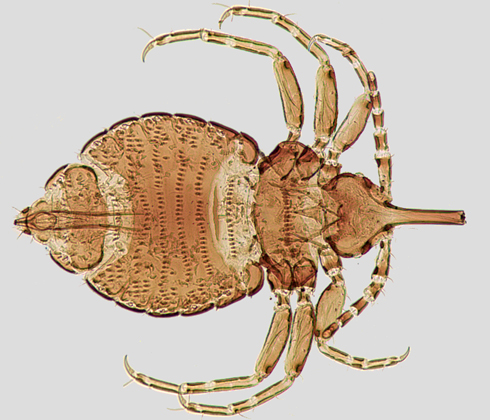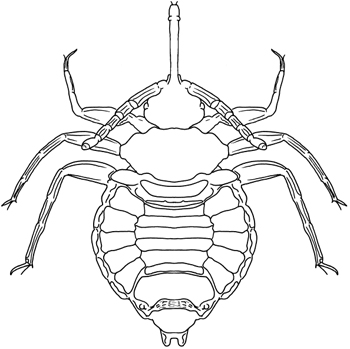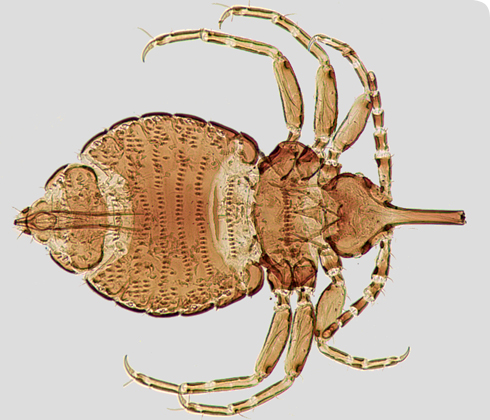Haematomyzus elephantis
Haematomyzus elephantis, commonly known as the elephant louse, lives and feeds on the skin of elephants.
The elephant louse can only survive on elephants. The tough, flexible elephant skin also permits the louse to survive in the climate.
Elephant lice are found on the more hairy regions, especially on juvenile elephants in folds of soft skin. They inhabit the ears, groin, axilla (armpits), or base of the tail.
The elephant louse follows the elephants whenever they move. They are transmitted from one elephant to another when two elephants come in contact with each other.
The elephant population can decline from an onslaught of the elephant louse.
Species detail
The louse uses sharp, outward facing mandibles to rasp at the tough surface of the skin, eating off the hairs and miscellaneous debris on the elephant.
-

Taxonomy
Haematomyzus elephantis the elephant louse has a distinct triangular shaped head , a long rostrum with outward facing mandibles. Find out more about the physical characteristics of the elephant louse.
-

Distribution
Haematomyzus elephantis lives and feeds on the skin of Indian and African elephants, thriving in the warm climates of India and the African grasslands. Discover more about the distribution of the elephant louse.
-

Behaviour
Haematomyzus elephantis is a social species. The lice attack and maintain contact colonially with the elephants. Learn more about how elephant lice live and feed on the elephants.
-

Conservation
Haematomyzus elephantis can only survive on elephants. As populations of African and Asian elephants are endangered, should a similar status be ascribed to the elephant louse? Find out more.
Images

Haematomyzus elephantis
© V Smith
Haematomyzus elephantis
© V Smith
A line drawing of Haematomyzus elephantis the elephant louse.
© V SmithAbout the author
Dr Vince Smith
Cybertaxonomist, Entomology Systematics and Evolution, Department of Entomology.
